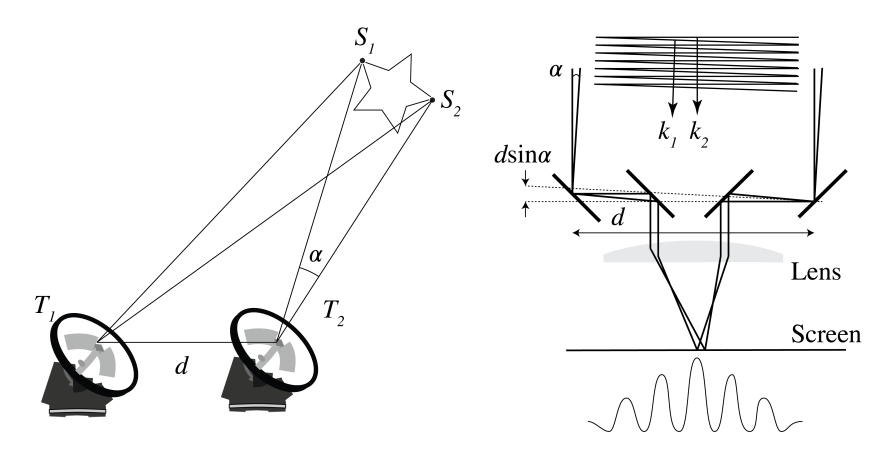5.9: Stellar Interferometry
( \newcommand{\kernel}{\mathrm{null}\,}\)
The property that the spatial coherence of two transversely separated points decreases for increasing angle which the source subtends at the two points, is used in stellar interferometry. It works as follows: we want to know the size of a certain star. The size of the star, being an extended spatially incoherent source, determines the spatial coherence of the light we receive on earth. Thus, by measuring the interference of the light collected by two transversely separated telescopes, one can effectively create a double-slit experiment, with which the degree of spatial coherence of the star light on earth can be measured, and thereby the angle which the star subtends on earth. The resolution in retrieving the angle from the spatial coherence is larger when the distance between the telescopes is larger (see 5.7.14). Then, if we know the distance of the star by independent means, e.g. from its spectral brightness, we can deduce its size from its angular size.
The method can also be used to derive the intensity distribution at the surface of the star. It can be shown that the degree of spatial coherence as function of the relative position of the telescopes is the Fourier transform of the intensity distribution. Hence, by moving the telescopes around and measuring the spatial coherence for many positions, the intensity distribution can be derived from a back Fourier transform.


